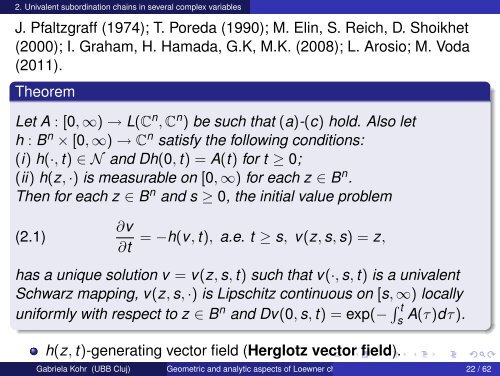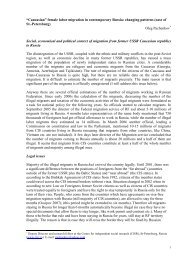Gabriela Kohr
Gabriela Kohr
Gabriela Kohr
You also want an ePaper? Increase the reach of your titles
YUMPU automatically turns print PDFs into web optimized ePapers that Google loves.
2. Univalent subordination chains in several complex variables<br />
J. Pfaltzgraff (1974); T. Poreda (1990); M. Elin, S. Reich, D. Shoikhet<br />
(2000); I. Graham, H. Hamada, G.K, M.K. (2008); L. Arosio; M. Voda<br />
(2011).<br />
Theorem<br />
Let A : [0, ∞) → L(C n , C n ) be such that (a)-(c) hold. Also let<br />
h : B n × [0, ∞) → C n satisfy the following conditions:<br />
(i) h(·, t) ∈ N and Dh(0, t) = A(t) for t ≥ 0;<br />
(ii) h(z, ·) is measurable on [0, ∞) for each z ∈ B n .<br />
Then for each z ∈ B n and s ≥ 0, the initial value problem<br />
(2.1)<br />
∂v<br />
∂t<br />
= −h(v, t), a.e. t ≥ s, v(z, s, s) = z,<br />
has a unique solution v = v(z, s, t) such that v(·, s, t) is a univalent<br />
Schwarz mapping, v(z, s, ·) is Lipschitz continuous on [s, ∞) locally<br />
uniformly with respect to z ∈ B n and Dv(0, s, t) = exp(− t<br />
s A(τ)dτ).<br />
h(z, t)-generating vector field (Herglotz vector field).<br />
<strong>Gabriela</strong> <strong>Kohr</strong> (UBB Cluj) Geometric and analytic aspects of Loewner chains 22 / 62

















